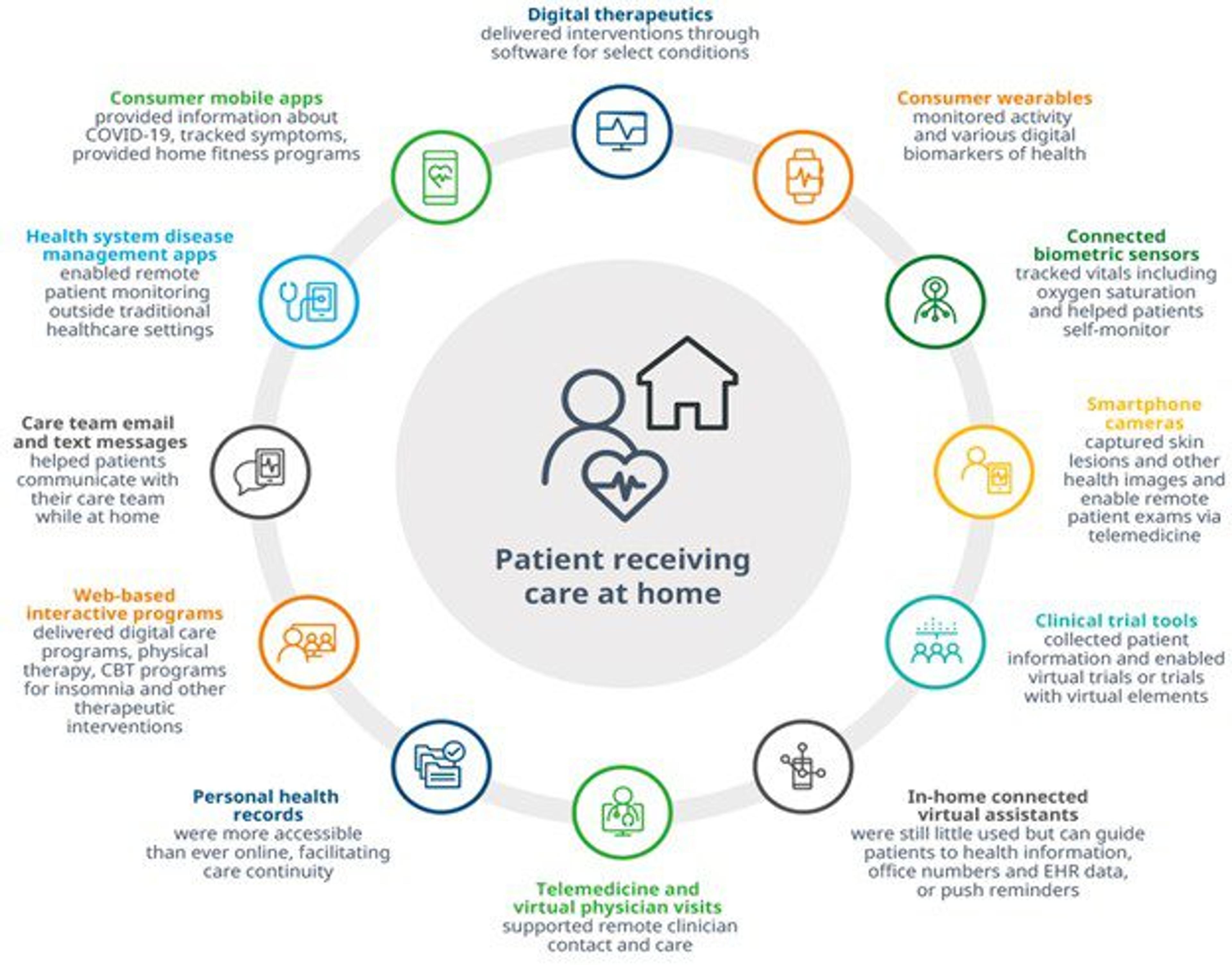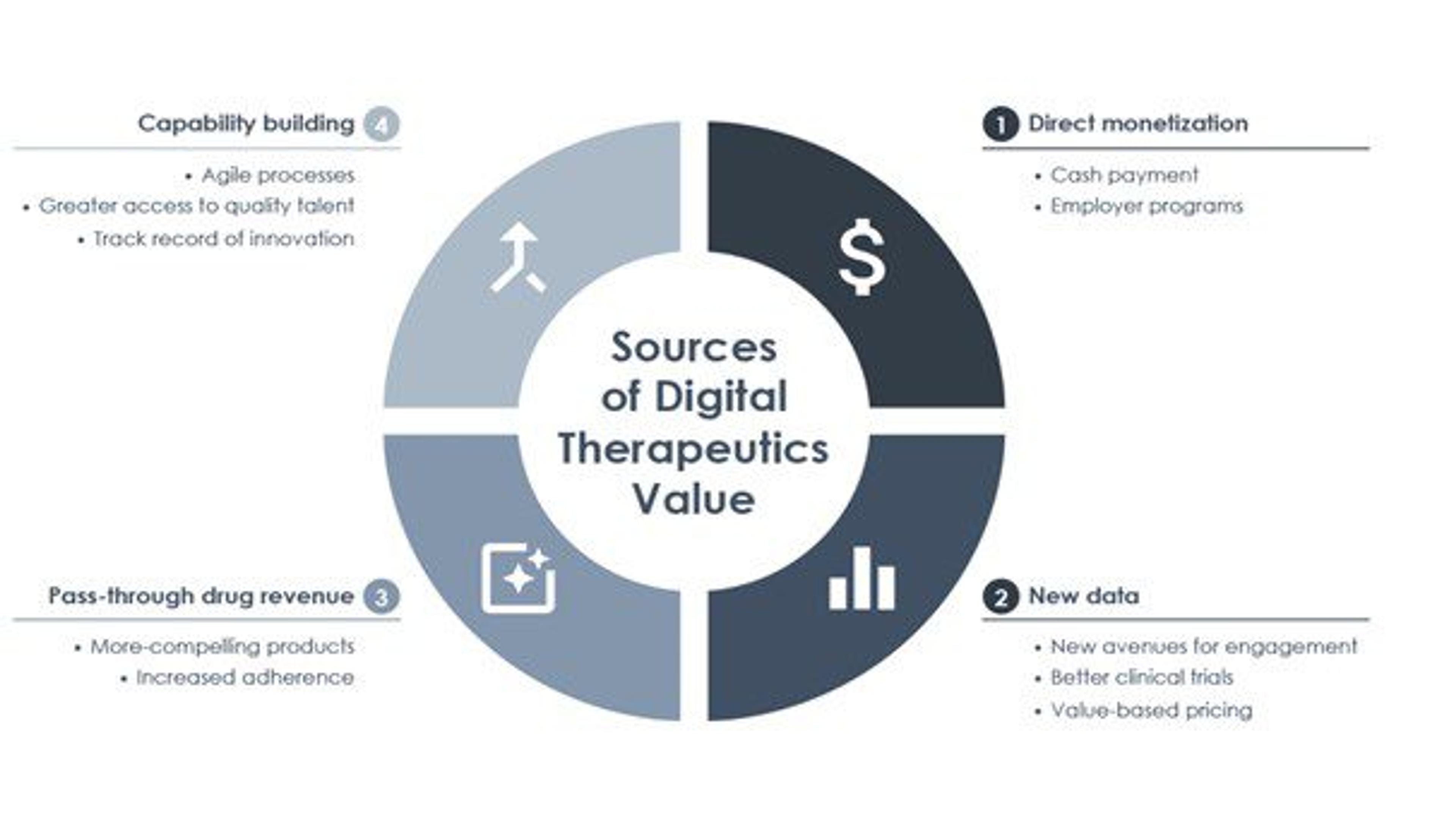blog
How Digital Therapeutics Are Changing Healthcare Delivery

SECTIONS
Healthcare industry experts anticipate that the next few years will bring significant changes that will affect both practitioners and their patients. Many of these changes result from a shift toward value-based care and the use of modern technology— such as digital therapeutics services— to comprehensively enhance the quality of healthcare services.
Besides, the COVID-19 pandemic has forced health systemsOpens in a new tab to take swift action and undergo specific quality improvement training to develop brand-new approach systems, thus accelerating the development of digital therapeutics (DTx).
Key Takeaways:
- Digital therapeutics products are in demand in all spheres of medicine, including treatment, rehabilitation, disease prevention, and wellness for individuals and various population segments.
- DTx serves as an effective option for fighting the COVID-19 outbreak by eliminating direct contact with other people in the healthcare setting.
- DTx technologies are highly scalable and low cost.
What Is Digital Therapeutics in Terms of Digital Transformation?
Digital therapeutics is a vital area of health care that uses digital technology to measure a person’s physical condition and equip patients and healthcare providers with the most advanced, smart, and accessible tools to solve many challenges.
DTx uses a diverse range of products, including mobile apps, software, and online platforms that are designed to serve people in the healthcare system. For example, patients can easily download any mobile app to monitor their health, track physical activity, and improve their well-being. At the same time, physicians use digital apps and software to obtain patient outcomes information, conduct telemedicine visits, and keep in touch with healthcare insurance providers.
Major Changes to Expect from the Ongoing Digital Therapeutics Boom
DTx has increased patients’ awareness of their health and general health data exchange within the healthcare data management system. Here are the other changes to expect from it this year and in the future:
The Continuous Trend on Modern Technologies and Medical Innovations
According to researchers, all elements of the healthcare system are now experiencing a digital revolution. According to the report published by Kenneth Research, the worldwide DTx market will reach $171.13 billion by 2030Opens in a new tab.
Artificial Intelligence
Artificial intelligence (AI) made it possible for collecting, storing, processing big data; the growth of processing power; and the advent of cloud storage. In health care, AI can help expand the opportunities for doctors and patients, provide more comfortable medical care, reduce the number of appointments, and provide services to people who can’t get traditional medical care.
With AI:
- Physicians can interpret images quickly and accurately
- Healthcare systems can improve workflow and reduce medical errors
- Patients can have easy access to their data and keep track of their healthOpens in a new tab
Digital Medicine Tools
Digital medicine tools can be used separately or in combination with pharmaceuticals, biologics, medical devices, or other medical equipment and supplies to optimize patient care and improve general interoperability in healthcare.
For example, they may include:
- Measurement tools such as digital biomarkers (e.g., a voice biomarker to track tremor changes in a Parkinson’s patient)
- Electronic clinical trial assessments (including results of electronic exams reported to patients)
- Measure motion safety tools (e.g., a wearable sensor that tracks falls)
- “Smart implants” that provide digital therapeutics services and control of connected implantable devices (such as an insulin pump)
Positive Impact on the Fight Against COVID-19 Pandemic Outbreak
The COVID-19 pandemic has shown the importance of digital medicine and digital technologies for timely diagnosis, treatment, monitoring, and rehabilitation of patients. Besides, the digital tools market for remote medical care is getting broader. In addition, the introduction and development of DTx can have a beneficial effect on reducing the incidence of COVID-19 through remote treatment and increased social distance.

The growing popularity of DTx already allows patients to constantly contact healthcare providers. Here are the latest data in the United States:
- 76% of hospitalsOpens in a new tab communicate with patients using some form of digital therapeutics.
- The popularity of telemedicine services has increased nearly 30-fold, namely by 2,817%Opens in a new tab when comparing December 2019 to December 2020.
- The number of offline doctor appointments dropped by 23%Opens in a new tab in March 2020 and 52% in April 2020. At the same time, the number of remote appointments increased by 1,000% and more than 4,000%, respectively.
Establishing a Policy of Affordable Treatment Services
The U.S. government approves DTx in the doctor-patient format at the federal level, which can be applied to provide patients with specialized care as an alternative to costly in-person appointments. DTx includes technologies that allow physicians to remotely monitor a patient’s condition, keep an electronic medical record, hold consultations, and purchase medications from online pharmacies, including electronic prescriptions.
These tools have made more efficient use of human health resources and have reduced health care costs and unnecessary hospitalizations for patients. In addition, visits to an in-person doctor are generally less expensive than medical facility visits, thanks to telemedicine. According to recent research, patients can save up to 50%Opens in a new tab by applying for medical services online.

Another reason fostering this technological boom is the adoption of the U.S. government regulations regarding funds reimbursement for using DTx services and the ability to obtain care across the states.
Manage DTx Data with Coperor E-MDM Platform
Many hospitals and physician practices are supporting the transition to digital therapeutics for non-primary appointments to reduce the further spread of the pandemic. Thus, they need more advanced systems to deliver digital treatments and keep track of all the required data in the system. Coperor E-MDM by Gaine helps transform the entire healthcare infrastructure, track all the data coming into digital health system platforms, and take a modern approach to analyze and store information.
The industry is gaining momentum and introducing new services and systems to improve digital systems and healthcare delivery through digital medicine. The Coperor E-MDM platform provides medical and technical solutions to help healthcare providers perform quality online digital therapeutics appointments and manage all core healthcare data during and after the appointments.
If you want to know more about Coperor, contact us.
